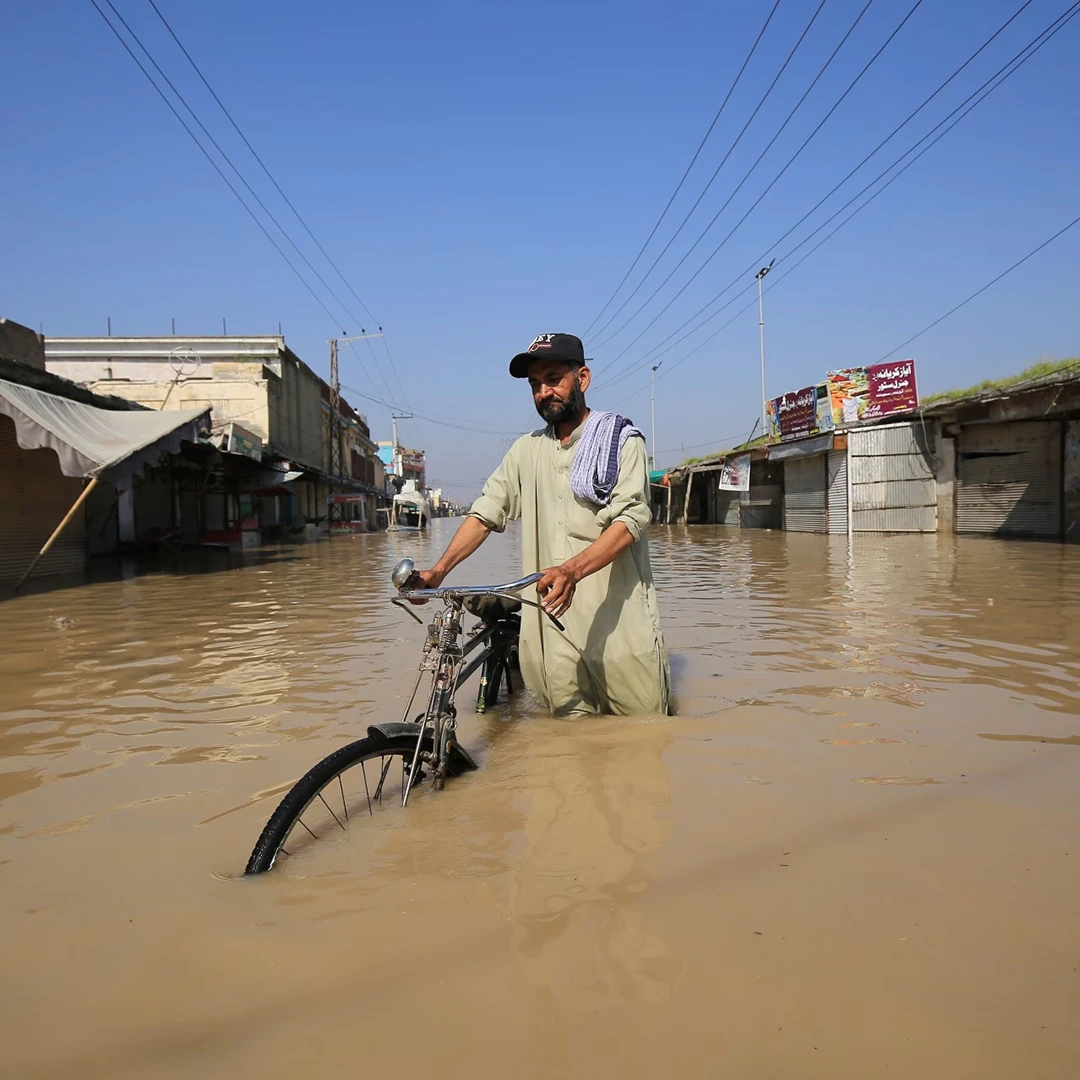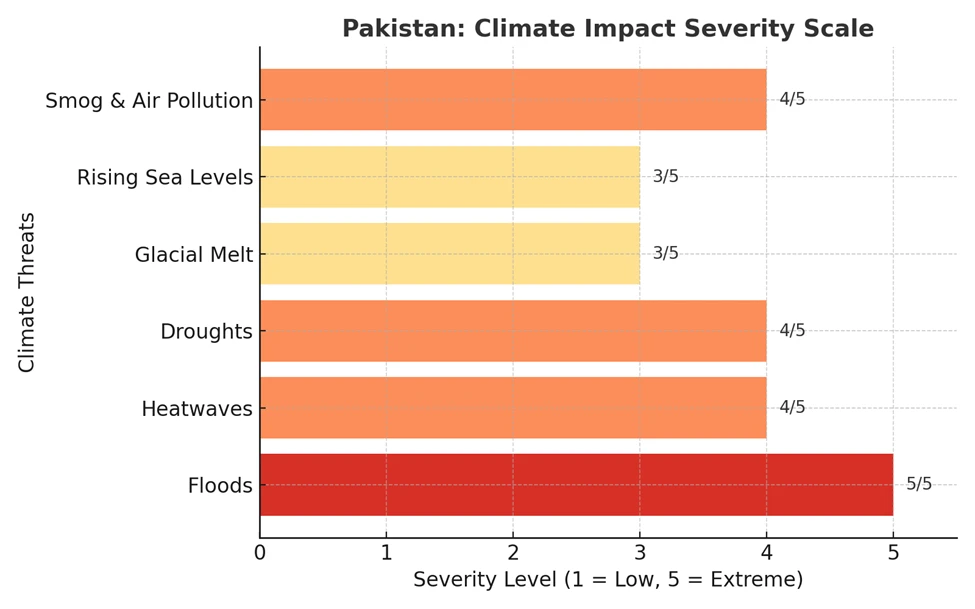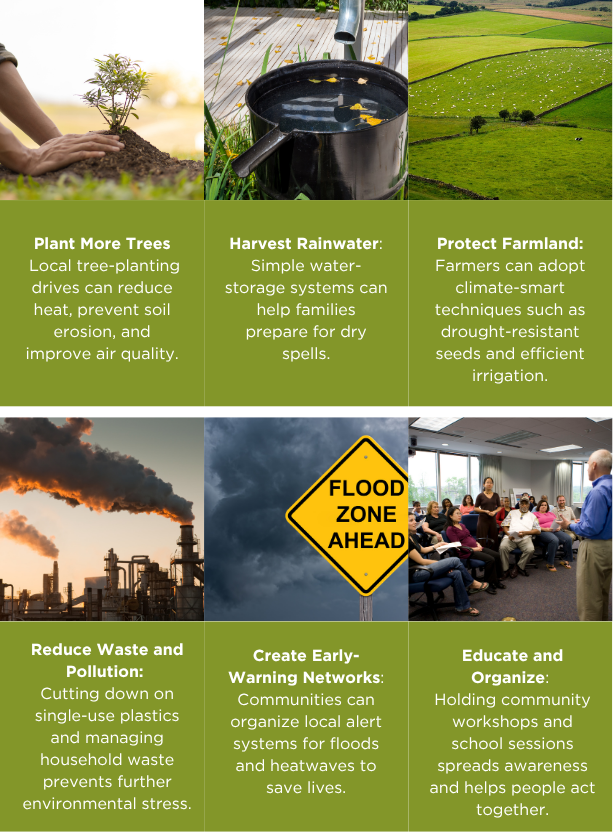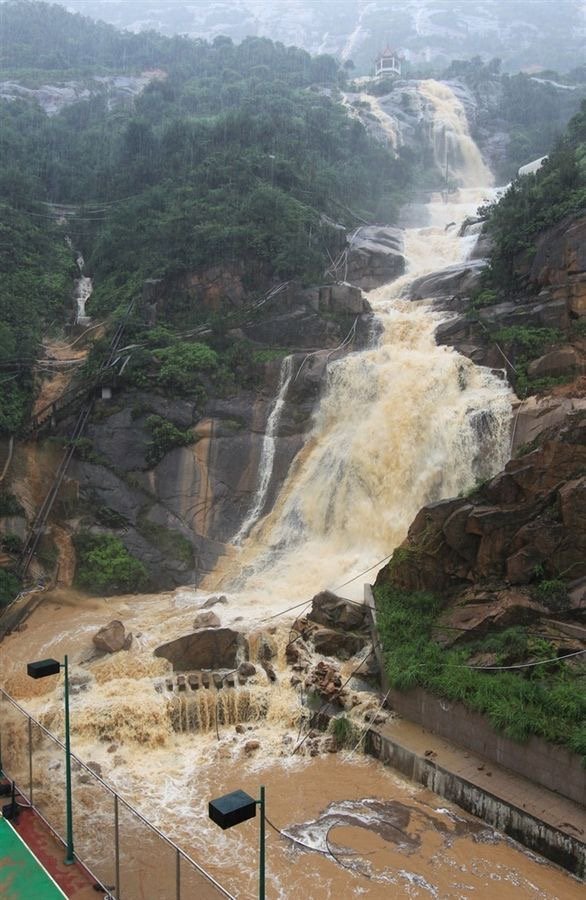Pakistan’s Climate Crisis and the Global Response

•The Pakistan Climate Change Act (2017): Establishes the Pakistan Climate Change Council and the Pakistan Climate Change Authority to coordinate national climate policies.
•The National Climate Change Policy (2012): Lays out strategies for adaptation and mitigation, covering water, agriculture, energy, and disaster management.
•The Pakistan Environmental Protection Act (1997): Provides a legal basis for controlling environmental pollution and protecting natural resources.
Why Pakistan Is So Exposed
Imagine a country that relies heavily on farming, yet its water supply depends on glaciers melting too quickly. Picture overcrowded cities absorbing families who have lost their rural homes to floods. Pakistan’s extreme vulnerability to climate change stems from a combination of geographic, economic, and institutional factors. Its dependence on the Indus River system makes agriculture highly sensitive to glacial melt and changing monsoon patterns. In 2010, super floods submerged one-fifth of the country, displaced over 20 million people, and caused economic losses exceeding USD 10 billion. In 2022, floods were described by the UN as a “monsoon on steroids,” destroying crops, damaging infrastructure, and pushing millions toward food insecurity and migration to urban areas.
Global Promises, Local Laws
Pakistan contributes less than 1% of global greenhouse gas emissions, and suffers consequences caused mainly by industrialized nations. International frameworks like the United Nations Framework Convention on Climate Change (UNFCCC, 1992) and the Paris Agreement (2015) intended to aim to correct this imbalance by urging developed countries to provide financial aid, technology, and capacity-building support to vulnerable nations.
Pakistan has formally committed to these frameworks by submitting its Nationally Determined Contributions (NDCs) pledges to reduce emissions and improve climate adaptation. Key laws passed:
Pakistan’s exposure is not merely a natural phenomenon; it is amplified by weak urban planning, inadequate water management policies, and limited disaster preparedness. Without systemic reforms, each climate shock escalates into a socio-economic crisis, leaving vulnerable communities with little capacity to recover before the next disaster strikes.
What’s Holding Us Back?
Despite Pakistan’s commitment to international climate agreements and the presence of national climate policies, there remains a stark gap between legal frameworks and on-ground implementation. Weak governance structures marked by overlapping institutional responsibilities and poor coordination across federal, provincial, and local levels significantly hamper the enforcement of these policies. This disconnect is further compounded by low public awareness; without informed and engaged communities, critical adaptation strategies such as disaster preparedness and water conservation remain underutilized. As a result, well-intentioned laws fail to translate into meaningful climate resilience.

The Path Forward: Laws Need Action
To change the future, Pakistan must act boldly while demanding that the global community fulfils its promises. This means simplifying the process for accessing international funds so that financial aid reaches the country quickly during emergencies. Domestically, Pakistan must enforce its own climate laws, strengthen institutions, and build local expertise to manage crises without waiting for external help. Public engagement is essential awareness campaigns can empower citizens to use existing laws, adopt drought-resistant farming techniques, conserve water, and hold authorities accountable.
Equally important, Pakistan should forge alliances with other vulnerable nations to push for stronger international legal mechanisms that ensure big polluters honour their obligations under the Paris Agreement and related treaties. Without binding accountability, global climate promises risk remaining words on paper.
International agreements like the Paris Agreement (2015) set global emission reduction goals. Countries decide their own targets, and when they miss them—as seen with the United States’ withdrawal from the Paris Agreement under the Trump administration—there are no direct legal penalties. National laws also differ widely: for instance, the EU’s Climate Law (2021) legally commits member states to reach net-zero emissions by 2050, while many developing nations, including Pakistan, lack equally strong frameworks or enforcement capacity.
Although national courts are increasingly used to push governments toward stronger action.
In the case of Urgenda Foundation v. Netherlands (2019), the Dutch Supreme Court ordered the government to cut greenhouse gas emissions more aggressively to protect citizens’ rights. Similarly, in the case of Juliana v. United States, young plaintiffs sued the U.S. government, alleging that its policies promoting fossil fuels violated their constitutional rights by contributing to climate change. These examples show that legal systems are evolving as tools for climate accountability but still face gaps in global coordination, enforcement, and balancing environmental goals with economic pressure.
Therefore, Pakistan’s struggle against climate change is not just a political or environmental issue; it is a fight for survival, economic stability, and future generations. Global laws and agreements can provide financial aid and technical support, but they cannot replace what must be done at home: stronger governance, public participation, and community-driven action.
Every new flood, every prolonged drought, and every heatwave is a reminder that time is running out. The path forward demands a partnership between the government, international allies, and ordinary citizens because protecting Pakistan’s future is a responsibility that belongs to all of us.
The author can be contacted at sgilani@awkum.edu.pk
Action Tips for Communities






